Related Research Articles
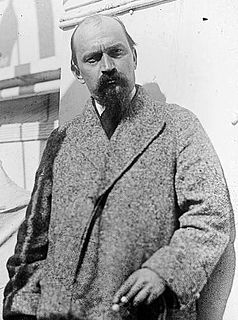
Ivan Meštrović was a Croatian sculptor, architect, and writer. He was the most prominent modern Croatian sculptor and a leading artistic personality in contemporary Zagreb. He studied at Pavle Bilinić's Stone Workshop in Split and at the Academy of Fine Arts Vienna, where he was formed under the influence of the Secession. He traveled throughout Europe and studied the works of ancient and Renaissance masters, especially Michelangelo, and French sculptors Auguste Rodin, Antoine Bourdelle and Aristide Maillol. He was the initiator of the national-romantic group Medulić. During the First World War, he lived in emigration. After the war, he returned to Croatia and began a long and fruitful period of sculpture and pedagogical work. In 1942 he emigrated to Italy, in 1943 to Switzerland and in 1947 to the United States. He was a professor of sculpture at the Syracuse University and from 1955 at the University of Notre Dame in South Bend, Indiana.

Ante Pavelić was a Croatian politician who founded and headed the fascist ultranationalist organization known as the Ustaše in 1929 and served as dictator of the Independent State of Croatia, a fascist puppet state built out of parts of occupied Yugoslavia by the authorities of Nazi Germany and Fascist Italy, from 1941 to 1945. Pavelić and the Ustaše persecuted many racial minorities and political opponents in the NDH during the war, including Serbs, Jews, Romani, and anti-fascists, becoming one of the key figures of the genocide of Serbs, the Porajmos and the Holocaust in the NDH.

Count Josip Jelačić von Bužim was a Croatian lieutenant field marshal in the Imperial-Royal Army and politician, the Ban of Croatia between 23 March 1848 and 19 April 1859. He was a member of the House of Jelačić and a noted army general, remembered for his military campaigns during the Revolutions of 1848 and for his abolition of serfdom in Croatia.

Slava Raškaj was a Croatian painter, considered to be the greatest Croatian watercolorist of the late 19th and early 20th century. Deaf since birth, Raškaj was schooled in Vienna and Zagreb, where her mentor was the renowned Croatian painter Bela Čikoš Sesija. In the 1890s her works were exhibited around Europe, including at the 1900 Expo in Paris. In her twenties Raškaj was diagnosed with acute depression and was institutionalised for the last three years of her life before dying in 1906 from tuberculosis in Zagreb. The value of her work was largely overlooked by art historians in the following decades, but in the late 1990s and early 2000s interest in her work was revived.

Vjekoslav Luburić was a Croatian Ustaše official who headed the system of concentration camps in the Independent State of Croatia (NDH) during much of World War II. Luburić also personally oversaw and spearheaded the contemporaneous genocides of Serbs, Jews and Roma in the NDH.

Andrija Artuković was a Croatian lawyer, politician, and senior member of the ultranationalist and fascist Ustasha movement, who served as the Minister of Internal Affairs and Minister of Justice in the Government of the Independent State of Croatia (NDH) during World War II in Yugoslavia. He signed into law a number of racial laws against Serbs, Jews, and Roma, and was responsible for a string of concentration camps in which over 100,000 civilians were tortured and murdered. He escaped to the United States after the war, where he lived until extradited to Yugoslavia in 1986. He was tried and found guilty of a number of mass killings in the NDH, and was sentenced to death, but the sentence was not carried out due to his age and health. He died in custody in 1988.
Kristian Kreković (1901–1985) was a Croatian painter of portraits and ethnographic art. Later in life he became known for his fascination with Incan art, and spent a number of years living in Peru.

Ivan "Ivo" Herenčić was a general in the armed forces of the Independent State of Croatia, a fascist puppet state. In 1941, he commanded a battalion of Ustaše Militia that committed many war crimes and atrocities on civilians in the NDH. Born in Bjelovar in Austria-Hungary, he completed his secondary and tertiary education in Zagreb and Sarajevo in what was by then the Kingdom of Yugoslavia. In 1933, he left Yugoslavia to join the fascist and ultranationalist Croatian Ustaše movement in Italy. Late that year, Herenčić participated in an unsuccessful assassination attempt on the King of Yugoslavia, Alexander.
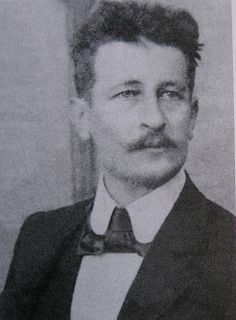
Oton Iveković was a Croatian painter. A graduate of Academy of Fine Arts in Vienna, Iveković later taught at the Zagreb Academy of Fine Arts. He largely concerned himself with historical topics as well as some religious themes. Many of his paintings remain the chief representations of Croatian history.
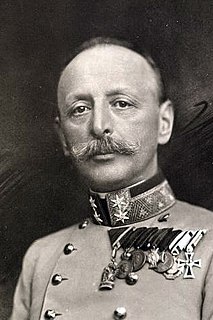
Stjepan Freiherr Sarkotić von Lovćen was an Austro-Hungarian Army generaloberst of Croatian descent who served as Governor of Bosnia and Herzegovina and military commander of Dalmatia and Montenegro during the World War I.

Miroslav Kraljević was a Croatian painter, printmaker and sculptor, active in the early part of the 20th century. He is one of the founders of modern art in Croatia.
Janko Baron Vranyczany-Dobrinović was a Croatian nobleman, politician and diplomat. He served as the first Minister of Tourism of Croatia between 1990 and 1991. Afterwards, he was named President of the Office of Croatia for Contacts with the European Union and NATO in 1991, and was appointed the first Permanent Representative of Croatia to the European Union after the office was established in 1996. He was removed from the post in a widespread turnaround of Croatian diplomats, initiated by the centre-left government of Ivica Račan.
Nada Tončić was a Croatian soprano opera singer.
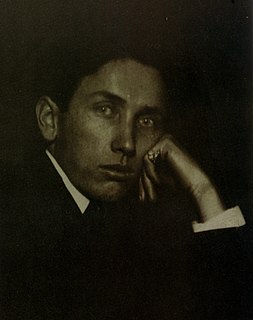
Josip Račić was a Croatian painter in the early 20th century. Although he died very young, and his work was mostly created during his student years, he is one of the best known modern Croatian painters. Today, Račić is regarded as one of the most important representatives of Croatian modern painting.

Vladimir Becić (1886–1954) was a Croatian painter, best known for his early work in Munich, which had a strong influence on the direction of modern art in Croatia.

Milan Emil Amruš was a Croatian physician, lawyer and politician, a two-term mayor of Zagreb.
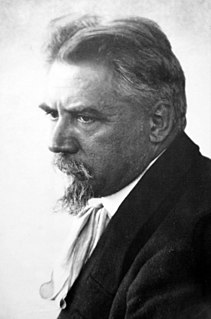
Emanuel Božidar Vidović was a Croatian painter and graphic artist from Split.

Josip Vancaš was an Austro-Hungarian and Yugoslav architect who spent most of his career in the Bosnian city of Sarajevo, where he designed over two hundred buildings. He also designed important buildings in present-day Croatia and Slovenia. He was also the first conductor of the Männergesangverein in Sarajevo, at its founding in 1887.
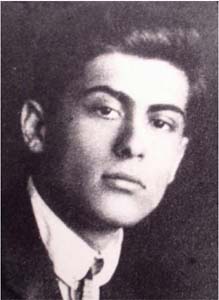
Ivan Rein was a Croatian Jewish painter.

August Košutić was a Croatian politician and a prominent member of the Croatian Peasant Party (HSS).
References
- 1 2 3 4 I'm returning to the city that gave me the dearest memories
- 1 2 Josip Antun Crnobori passes away Archived 2008-04-17 at the Wayback Machine , Croatian Heritage Foundation. August 16, 2005. Retrieved April 29, 2008.
- 1 2 3 Josip Crnobori biography